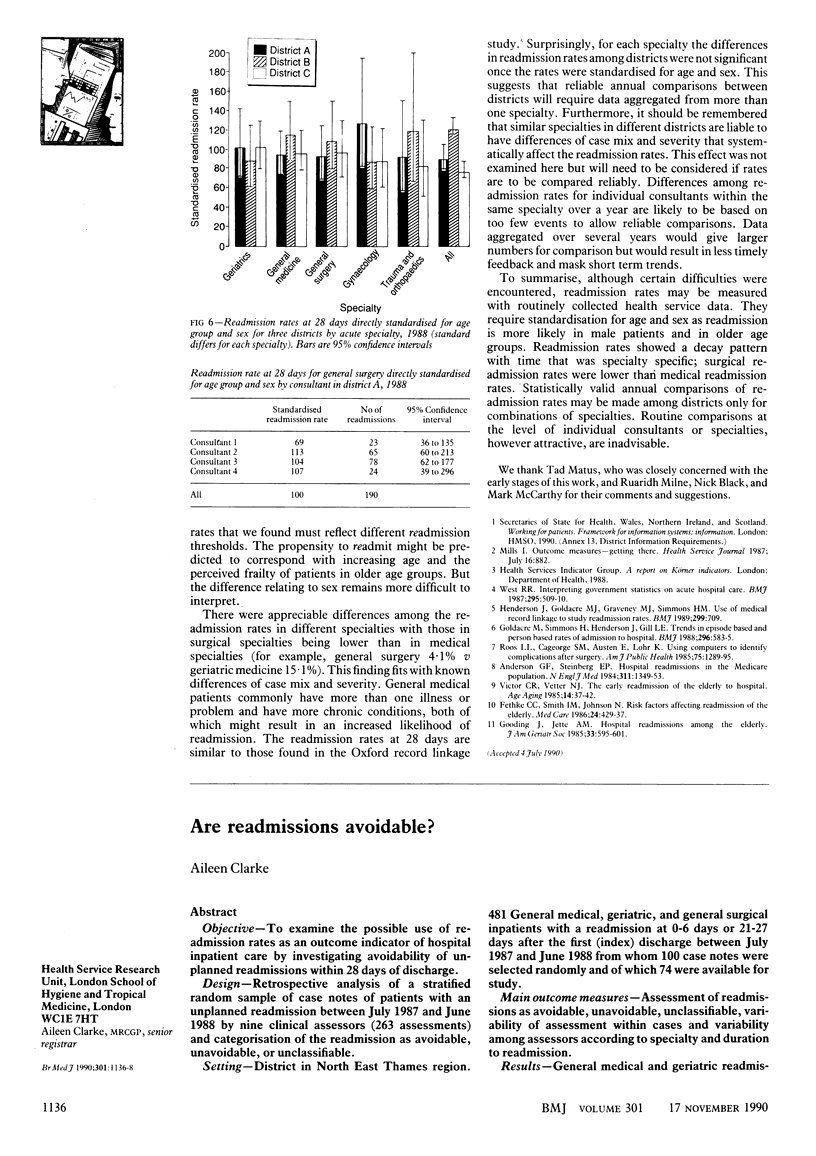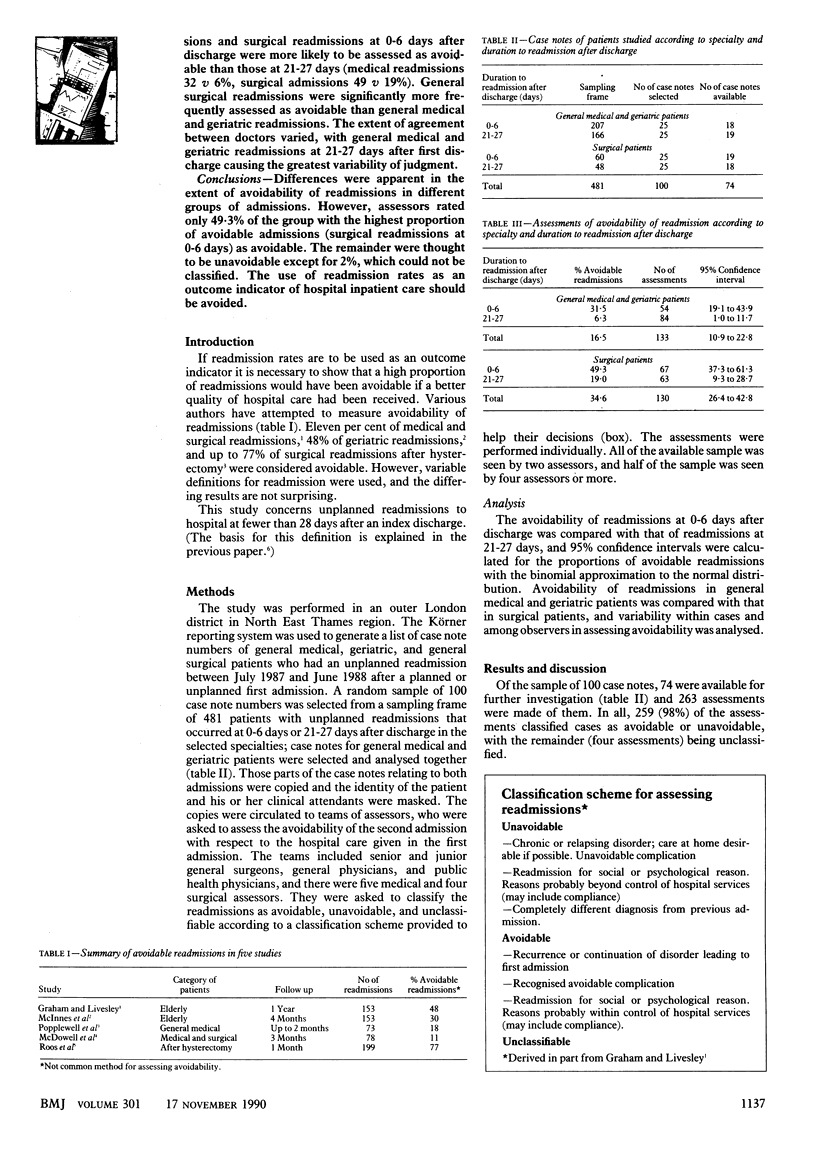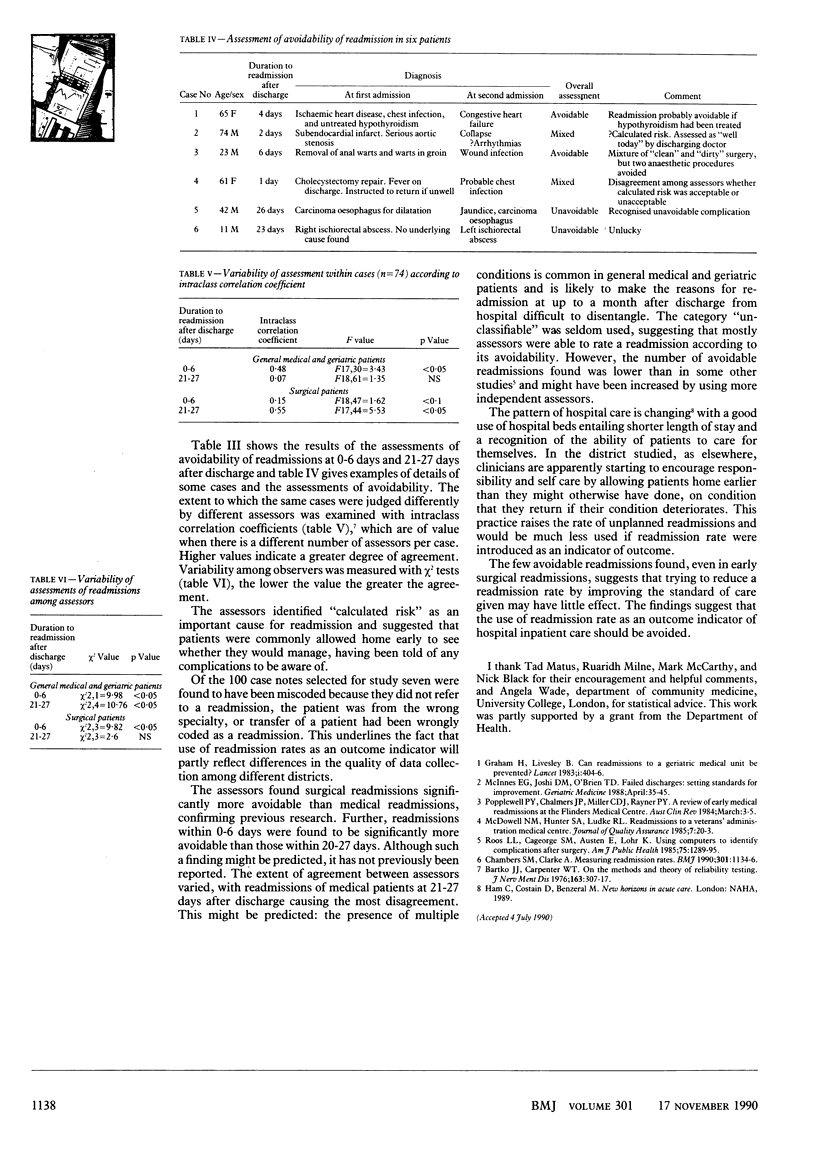Abstract
OBJECTIVE--To examine the possible use of readmission rates as an outcome indicator of hospital inpatient care by investigating avoidability of unplanned readmissions within 28 days of discharge. DESIGN--Retrospective analysis of a stratified random sample of case notes of patients with an unplanned readmission between July 1987 and June 1988 by nine clinical assessors (263 assessments) and categorisation of the readmission as avoidable, unavoidable, or unclassifiable. SETTING--District in North East Thames region. 481 General medical, geriatric, and general surgical inpatients with a readmission at 0-6 days or 21-27 days after the first (index) discharge between July 1987 and June 1988 from whom 100 case notes were selected randomly and of which 74 were available for study. MAIN OUTCOME MEASURES--Assessment of readmissions as avoidable, unavoidable, unclassifiable, variability of assessment within cases and variability among assessors according to specialty and duration to readmission. RESULTS--General medical and geriatric readmissions and surgical readmissions at 0-6 days after discharge were more likely to be assessed as avoidable than those at 21-27 days (medical readmissions 32 v 6%, surgical admissions 49 v 19%). General surgical readmissions were significantly more frequently assessed as avoidable than general medical and geriatric readmissions. The extent of agreement between doctors varied, with general medical and geriatric readmissions at 21-27 days after first discharge causing the greatest variability of judgment. CONCLUSIONS--Differences were apparent in the extent of avoidability of readmissions in different groups of admissions. However, assessors rated only 49.3% of the group with the highest proportion of avoidable admissions (surgical readmissions at 0-6 days) as avoidable. The remainder were thought to be unavoidable except for 2%, which could not be classified. The use of readmission rates as an outcome indicator of hospital inpatient care should be avoided.
Full text
PDF


Selected References
These references are in PubMed. This may not be the complete list of references from this article.
- Bartko J. J., Carpenter W. T., Jr On the methods and theory of reliability. J Nerv Ment Dis. 1976 Nov;163(5):307–317. doi: 10.1097/00005053-197611000-00003. [DOI] [PubMed] [Google Scholar]
- Chambers M., Clarke A. Measuring readmission rates. BMJ. 1990 Nov 17;301(6761):1134–1136. doi: 10.1136/bmj.301.6761.1134. [DOI] [PMC free article] [PubMed] [Google Scholar]
- Graham H., Livesley B. Can readmissions to a geriatric medical unit be prevented? Lancet. 1983 Feb 19;1(8321):404–406. doi: 10.1016/s0140-6736(83)91513-1. [DOI] [PubMed] [Google Scholar]


